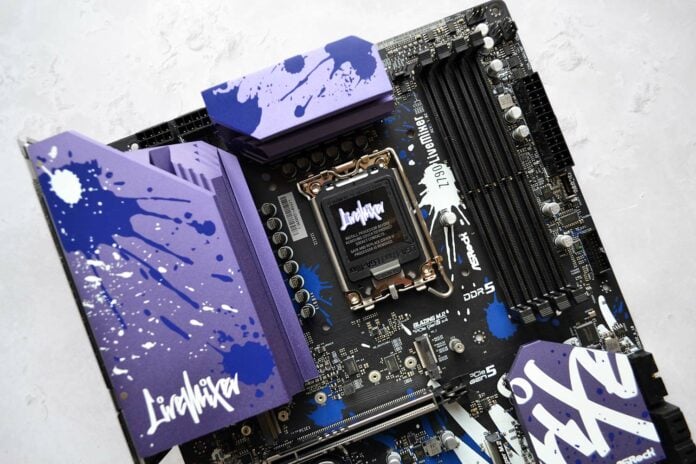Intel helped out motherboard partners by releasing more affordable 13th Gen Core chips at the turn of the year. Available for around £200, Core i5-13400F punches with heavy hands in its class. Though not strictly necessary, obtaining the best support comes via the premium Z790 chipset. There’s little need to spend £500-plus when pairing up these types of chips, so what’s relatively affordable and turns heads? Aside from a double Big Mac on a voucher deal, ASRock hopes to serve some tasty morsels with the Z790 LiveMixer motherboard.
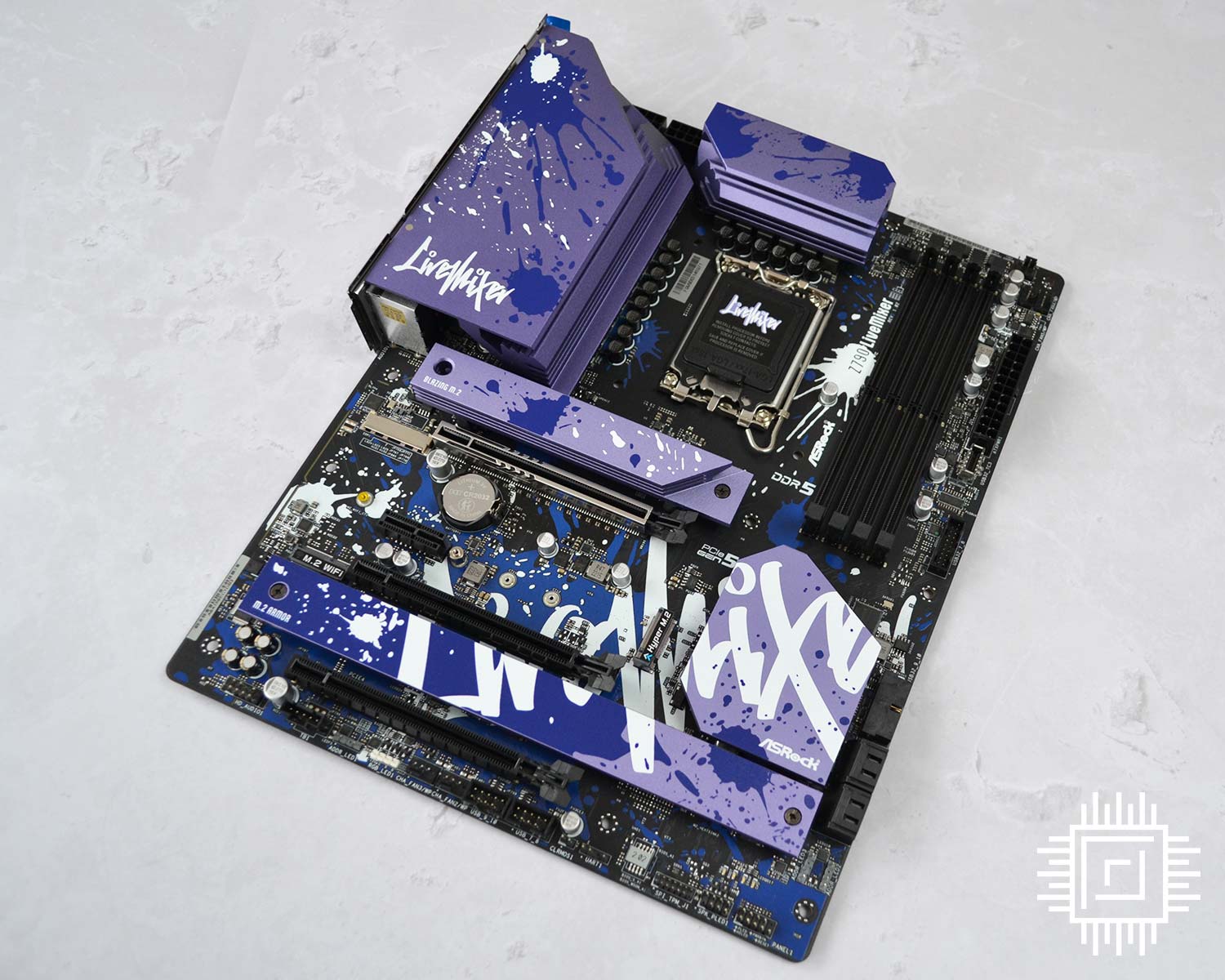

ASRock Z790 LiveMixer
£280
Pros
- Great design
- Solid value
- Top-notch performance
- Heaps of M.2
- Novel eDP port
Cons
- Lacklustre audio
- No onboard Wi-Fi
Club386 may earn an affiliate commission when you purchase products through links on our site.
How we test and review products.
No, we haven’t spilt a few cans of paint on a standard motherboard. This is how LiveMixer appears when atop of Intel’s best-ever consumer chipset. Credit where it’s due, ASRock doesn’t play it safe and deliberately opts for a distinctive colour scheme that’s sure to be divisive. We love it. Costing £280, it won’t break the bank, is guaranteed to turn heads, and puts a smile on our face every time we see it.
There’s natural support for 12th Gen Alder Lake chips, too, and ASRock offers mid-pack specification that’s more in tune with Core i5/i7 than massive-power Core i9. A 16-phase power supply doesn’t sound extreme as many, but rated at 60A each, there’s plenty of juice in reserve for even the zaniest overclocks with a Core i9-13900KS.
The purple is everywhere, from a pair of non-connected heatsinks around the VRMs to the two M.2 and chipset coolers. Fair play to ASRock, the colour is consistent across all, while the deliberate graffiti is well done – it’s printed onto the metal rather than being a sticker on top. And the heatsinks work well, too. Running our Core i9-13900K at full gallop – 253W unrestricted mode – leads to decent heat dissipation and maximum 55°C surface temperature.
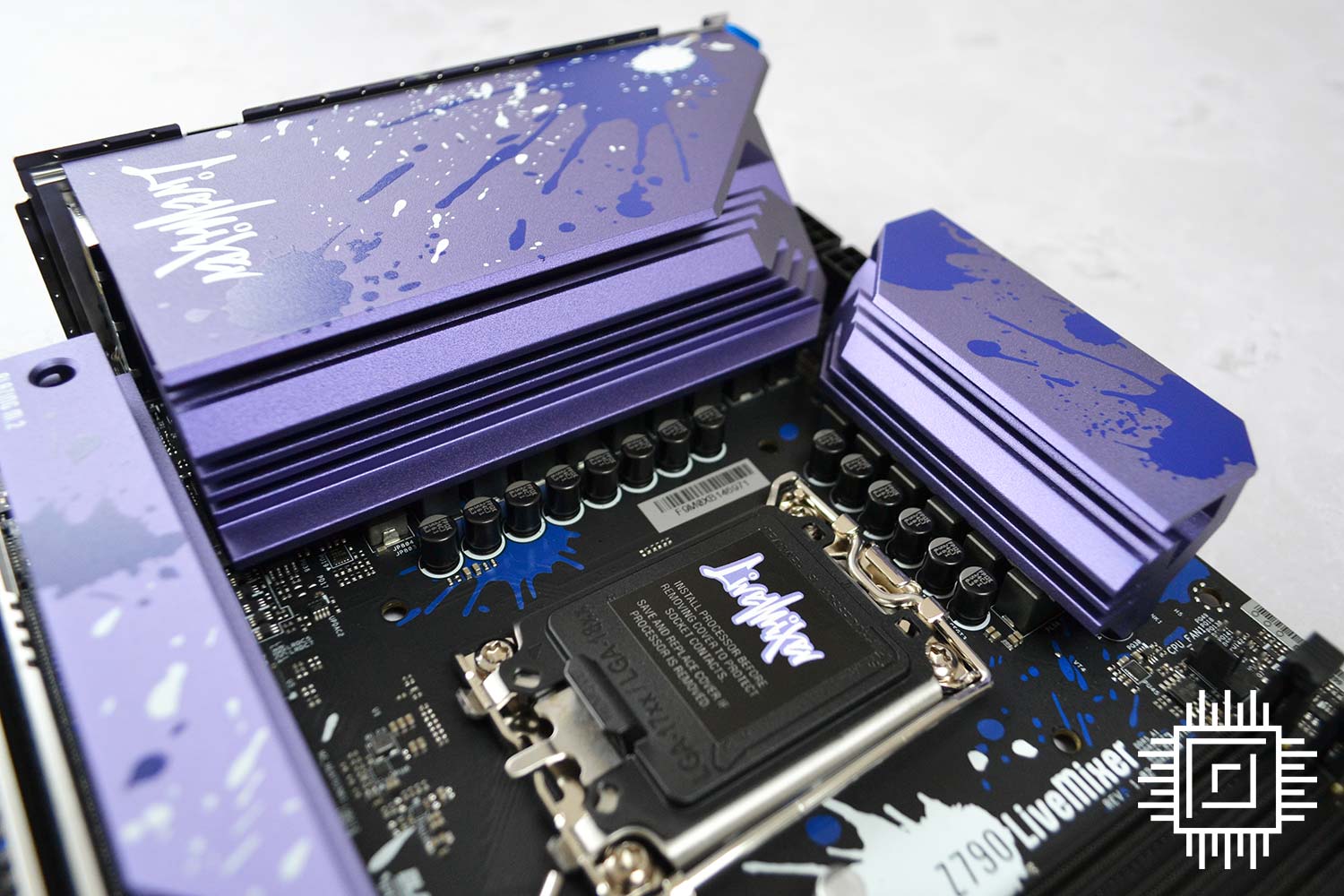
Some features have to give at this price point, including no onboard power buttons, debug LED, premium audio and multiple strengthened slots. Appreciating the name carries audio connotations, LiveMixer carries basic ALC897 audio rather than ALC1220 we see on many Z790 boards.
Heaps of M.2 and USB
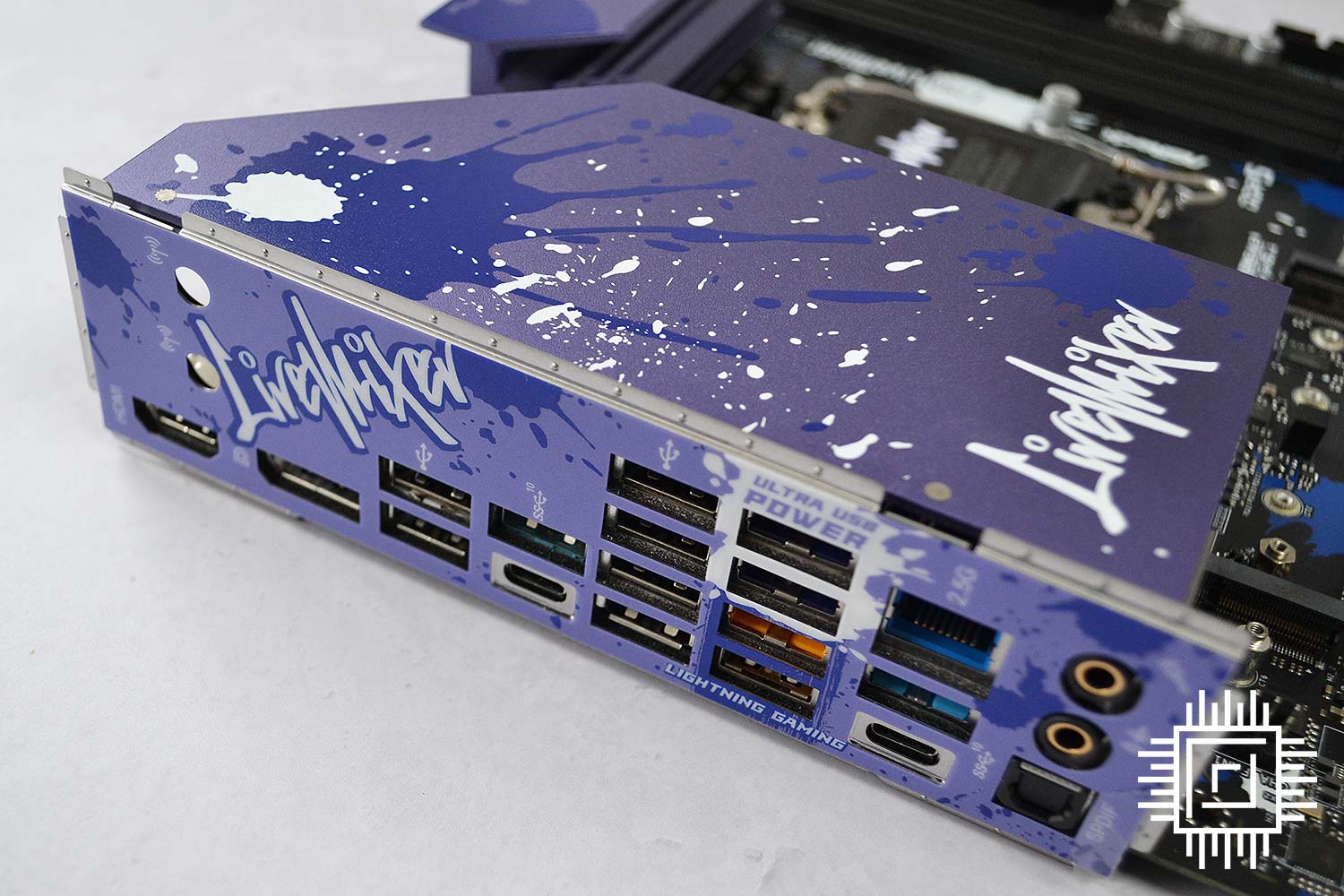
ASRock does well in keeping M.2 options open. The uppermost slot runs at PCIe 5.0 x4 and is primed for next-generation drives, though occupying it means the primary graphics slot drops down to x8 speed. Another M.2 resides directly opposite – known as Hyper M.2 and cooled by the same heatsink – which also connects to the CPU but at PCIe 4.0 x4 speeds. Three further M.2s, one of which is left bare, connect to the chipset. Bonus, unexpected benefit: the graffiti makes it easy to know which heatsink goes where.
ASRock runs amok with USB coverage. Count ’em out. There are 14 ports, of which four are 10Gbps, four 5Gbps, and a further eight good ol’ USB2.0 480Mbps. It’s handy two are USB-C and like, on other ASRock boards, two yellow-coloured ports are ring-fenced on a different controller for, according to the company, a more consistent connection when gaming.
There’s plenty of spacing between graphics slots, though most will only use one. What else, we hear you ask. Seven fan headers get a thumbs-up from us, and ASRock doesn’t forget about RGB by including a modicum of lighting through rear-mounted LEDs near the SATA ports. Wanting more? RGB and addressable LED headers exist bottom-centre.
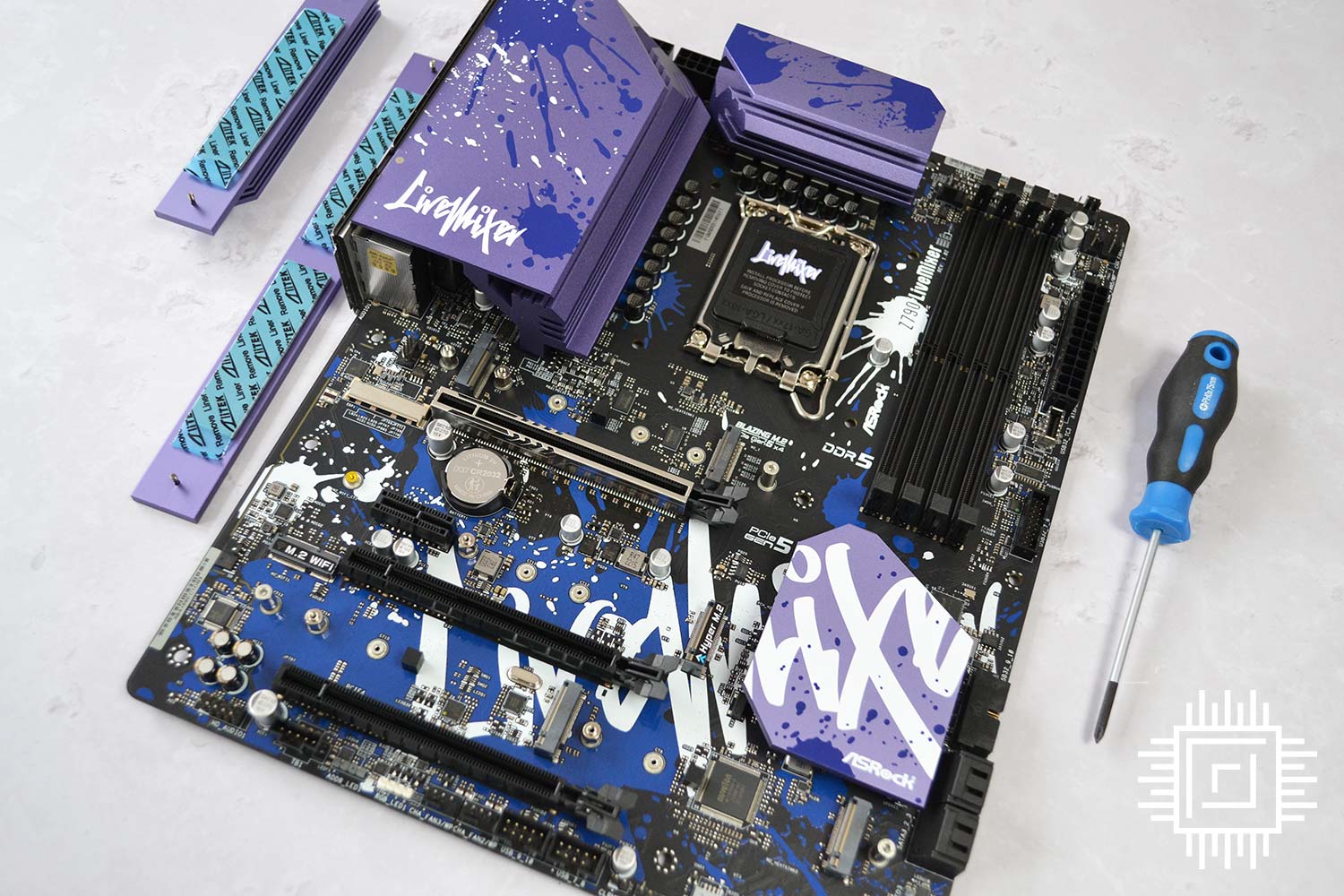
It’s a shame no Wi-Fi is integrated as there’s an unadorned slot on the PCB for this very purpose, but LiveMixer is strong in other areas, including general connectivity. There’s 2.5G LAN and both DisplayPort and HDMI outputs. The latter duo would normally constitute a full roster of outputs yet Z790 LiveMixer has an interesting trick up its sleeve.
Take another look to the left of the primary PCIe slot. What do you see? The 40-pin eDP signal connector is for host-powered LCD monitors that support internal embedded DisplayPort. These aren’t that common, and the connector is certainly unusual for a consumer motherboard ostensibly aimed at the enthusiast.
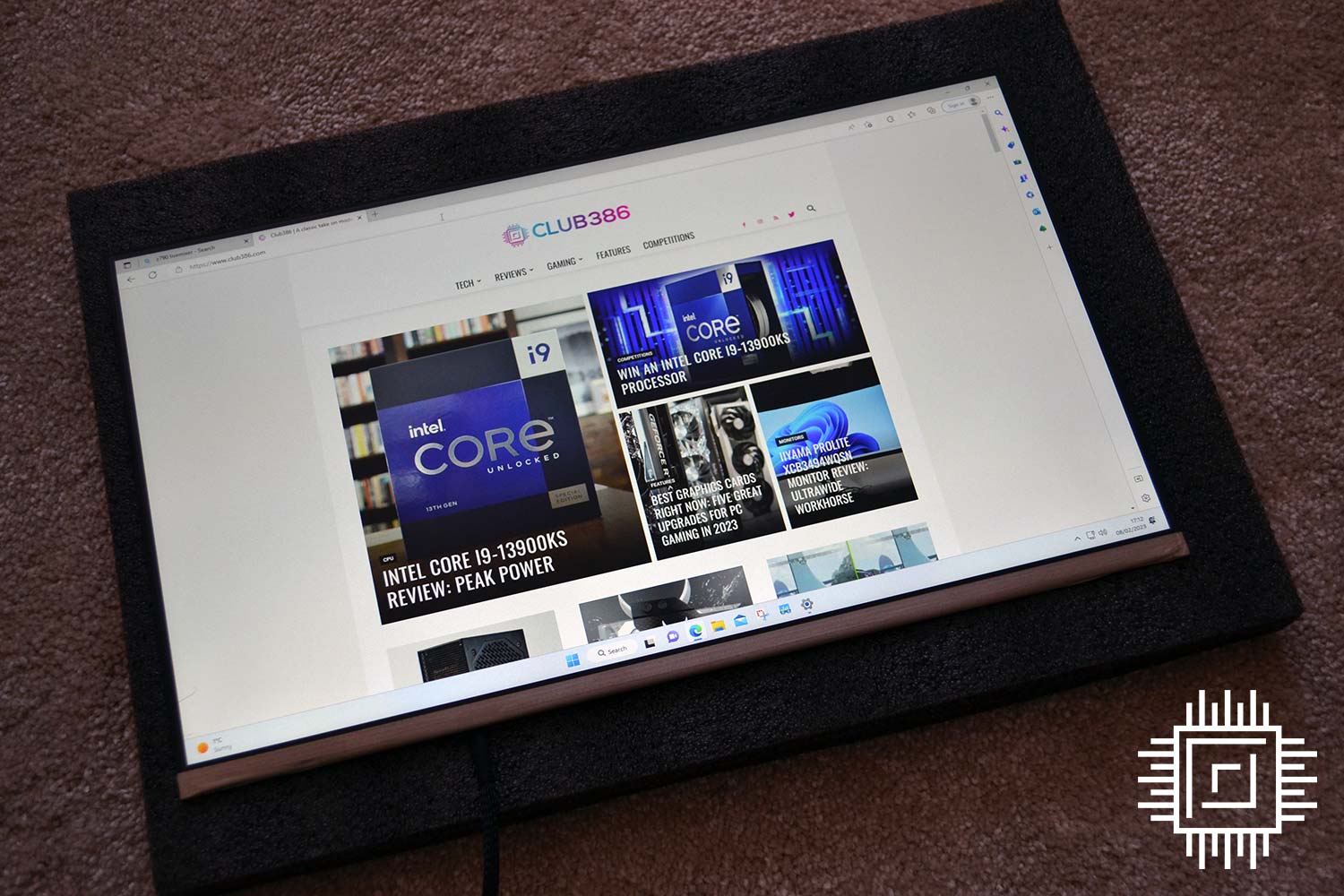
ASRock duly provided such a monitor for evaluation. Equipped with the necessary gubbins to attach to a windowed side panel – it needs to be clear, obviously – the 13.3in, FHD screen is bright, even, and is effectively a repurposed laptop panel. It doesn’t work particularly well for yours truly as my primary PC’s side panel is smoky. Even then, the size inhibits peering into an attractive case, especially when an attention-grabbing LiveMixer is in situ. Available for around £100 separately, understand that Z790 LiveMixer is one of nine ASRock boards with the on-PCB eDP connector. An interesting and unexpected feature, we’re curious to see whether modders will see any potential in an in-the-chassis screen.
Firmware
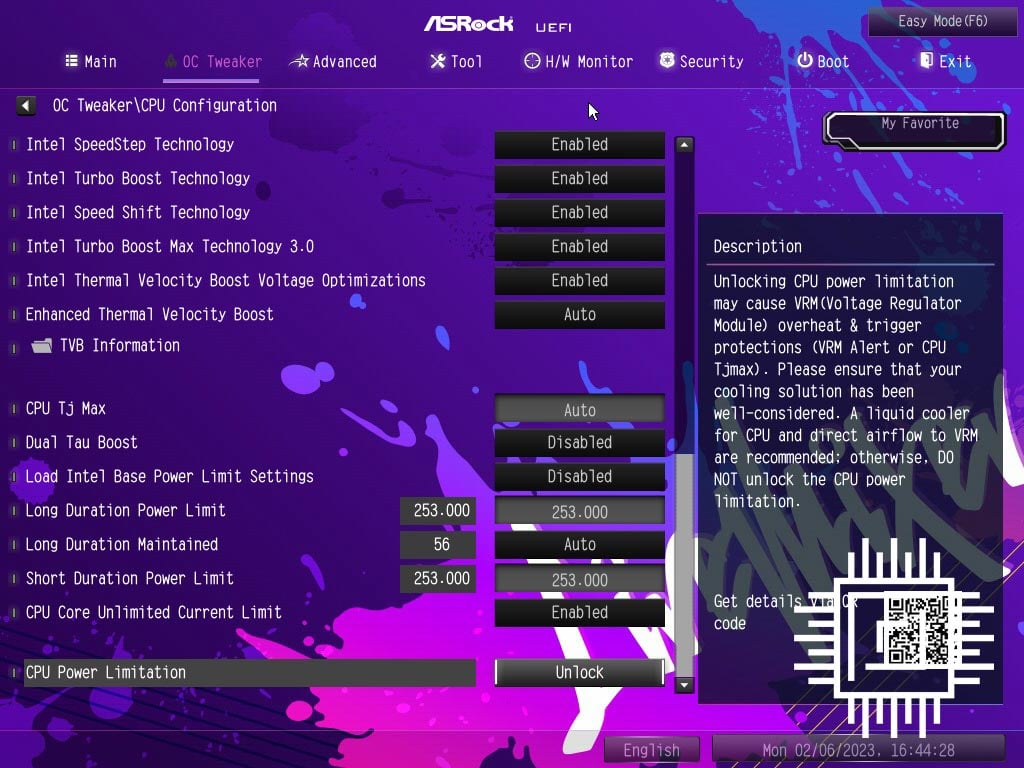
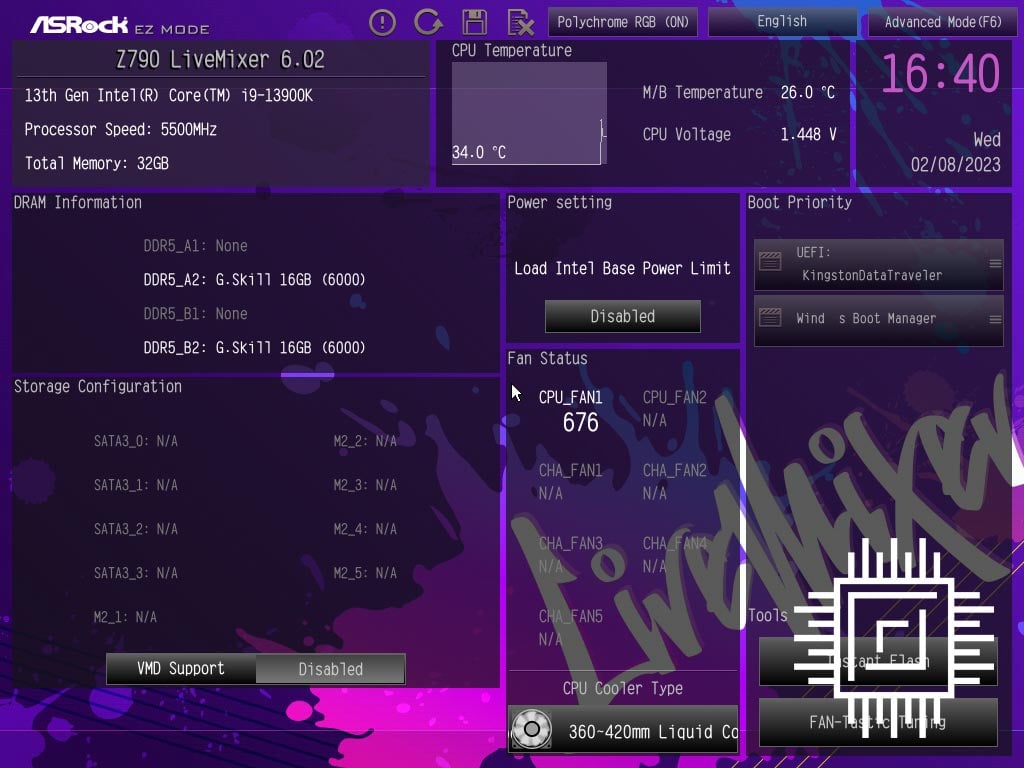
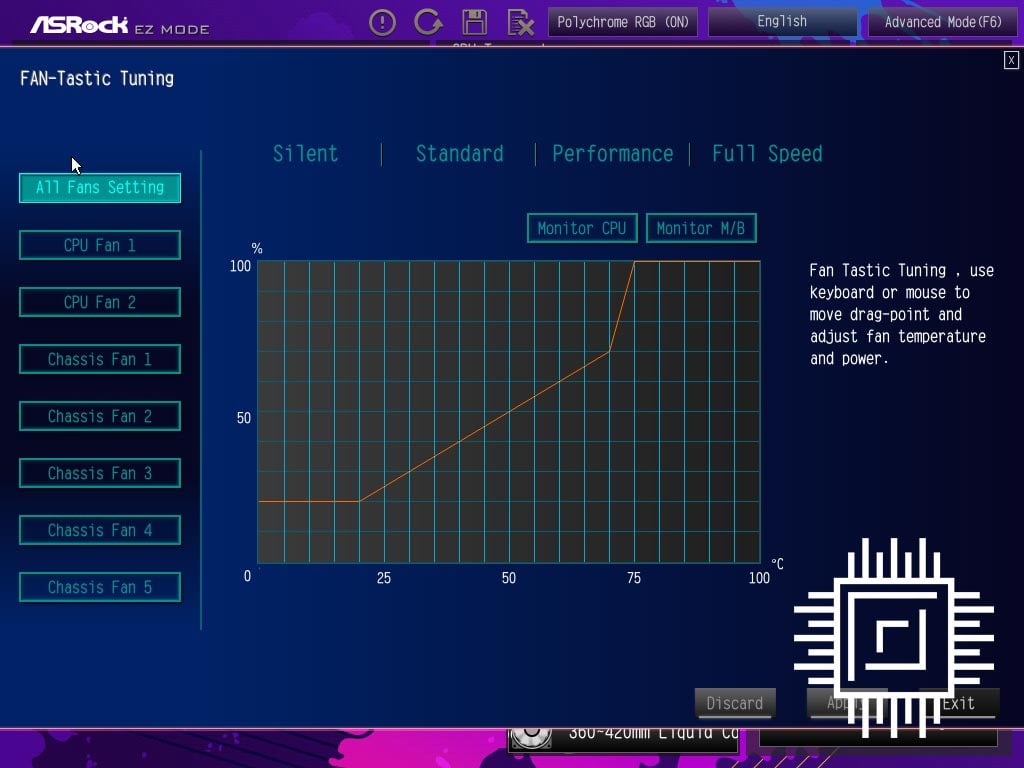
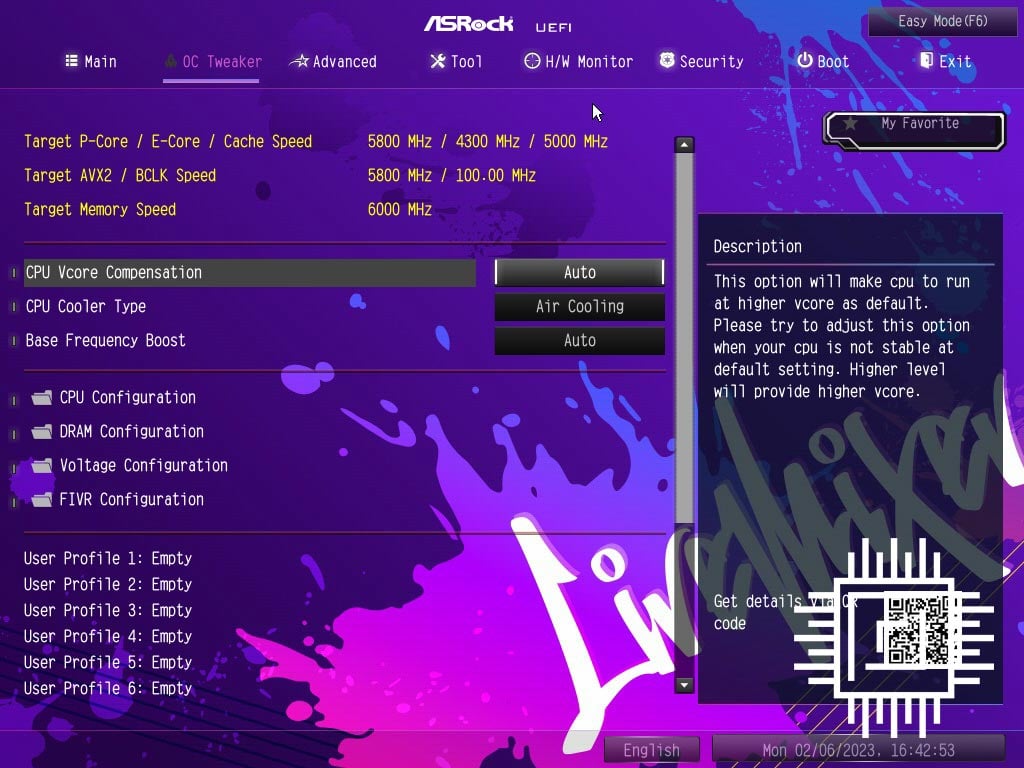
Got to love the colour. Kudos to ASRock for imbuing the firmware with the same tones as the board itself. Under the lustrous skin are familiar settings. It’s straightforward to ensure Z790 LiveMixer is operating in fully-primed mode by installing the requisite 253W capped power budget.
Updating firmware is a cinch, too, and we’re of the opinion that ASRock’s no-nonsense approach results in one of the better BIOS experiences.
Performance
The two upcoming Intel Z790 platforms use a Core i9-13900K while the ASRock X670E Taichi teams up with a Ryzen 9 7950X. Tests are carried out using a 32GB (2x16GB) G.Skill Trident Z5 Neo memory kit operating at 6,000MT/s and CL30. Rounding it off, there’s Nvidia GeForce RTX 3080 FE graphics, Noctua NH-D15 cooling, and a be quiet! Dark Power 13 1,000W PSU.

If it’s bandwidth you want, look no further than Z790. Hitting very close to 100GB/s, LiveMixer is no slouch.


Plenty of visual pizazz meets wholesome performance.

A well-tuned Z790 board is as good as any other, and begs the question why you’d want to spend double the amount.


With PCIe 5.0 coming on the horizon, peak speeds will change. Good news for prospective Z790 LiveMixer owners is this board’s ability to run said drives at their native 5.0 x4 speed in the M.2 slot closest to the CPU.


Whether you buy R9 7950X/X670E or 13900K/Z790, performance remains excellent.




The Intel combinations have a small performance lead when evaluated at FHD. Numbers come together when testing at 4K.
Outside of looks, ASRock clearly knows what it’s doing in the optimisation department.

We’ve noted performance is similar between boards, and so is power consumption when run in full-speed mode.
Putting Core i9-13900K in fully-unrestricted mode by removing any power shackles in firmware, we managed an all-core 5.6GHz alongside memory operating at 7GT/s. Not a bad return for what is considered a more mainstream board.
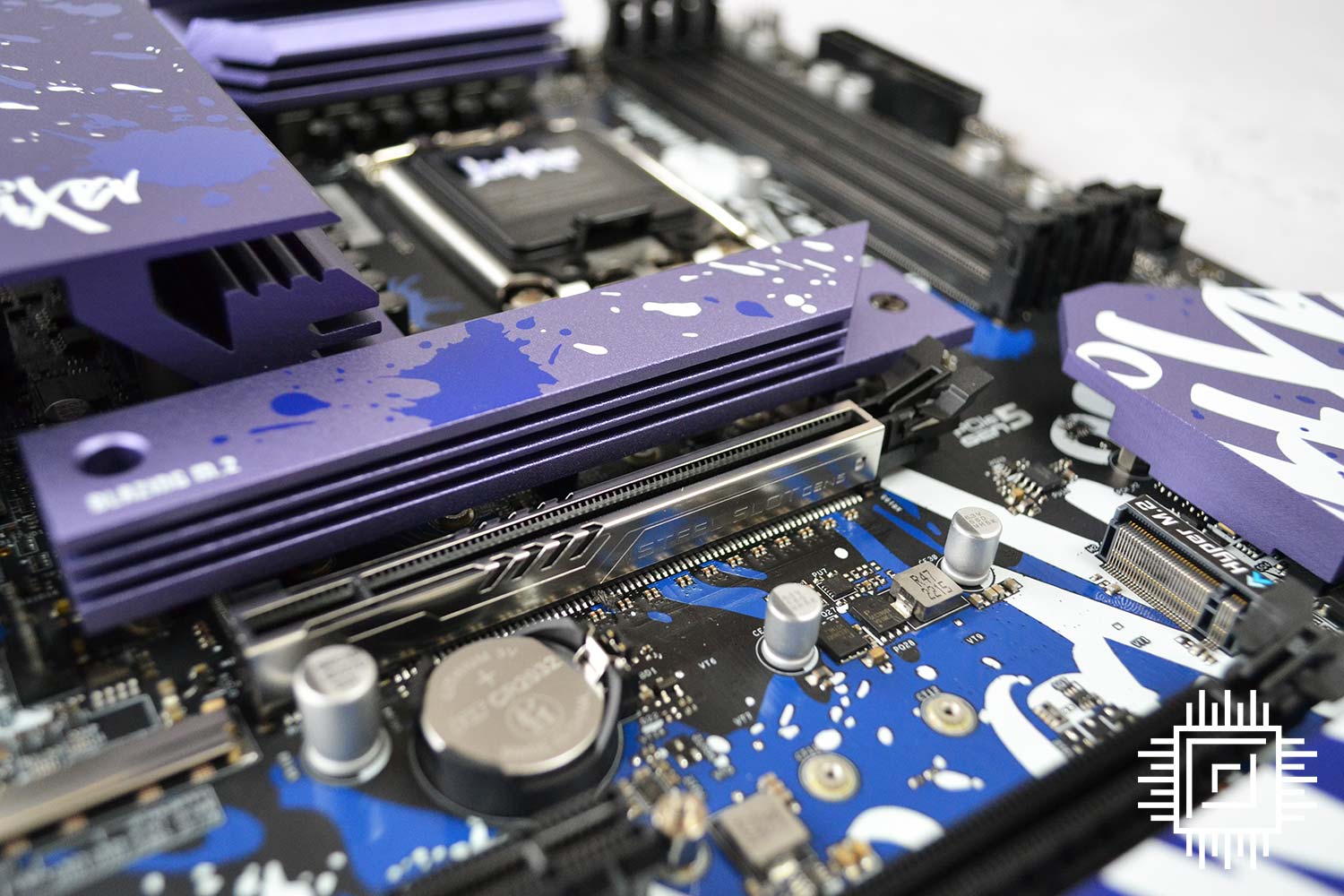
Conclusion
Rather than tow the mainstream and homogeneous design line for new motherboards, ASRock tries something different and succeeds with Z790 LiveMixer. Looks are subjective, of course, but we love to see something different, and the splash of colour on offer here looks even better in the flesh.
Rather than go silly on features and inflate price unnecessarily, £280 Z790 LiveMixer strikes a great balance between what is useful and what is superfluous. Enough juice to power even the Core i9-13900KS without issue, performance remains sharp.
Aside from basic audio and the absence of onboard Wi-Fi, ASRock nails how a mid-range Intel Z790 should look and perform. Want something different from the norm? Look no further than Z790 LiveMixer, and if you happen to favour AMD for your next build, wait ’til you see B650 in orange.
Verdict: A gorgeous board that performs well and carries well-thought-out features.


